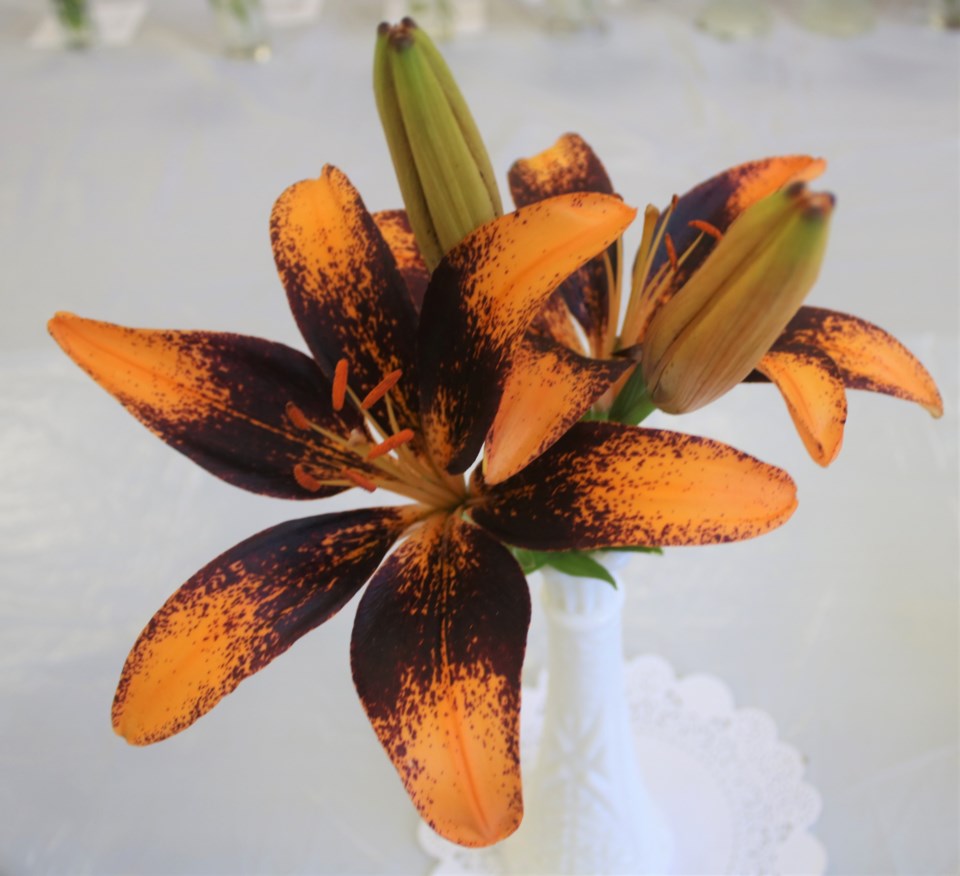One thing we should be doing is clearing out any annuals, either flowers or vegetables, that are done growing. If they are still producing, and many things have perked up considerably since our recent rains, then let them be. But if they are already starting to fade, pick the last of their produce and pull the plants. There is no need to wait until the cold winds of late fall start blowing to start cleaning our yards.
This is a fine time to divide perennials, or move them around to a new spot in our gardens. They still have time to settle in before winter arrives. How do we know if we should divide perennials? Several clues: if they had sparse or poor blooms; if the centre of the plant seems to be thinning; if the plants has simply become too large and messy for the space. This last option can be one that gives us our exercise for the day! Imagine that we have a large clump of daylilies to divide. Use a spade to dig them out, then take two digging forks and put them back to back, as close together as possible, in the middle of the clump. After sinking the forks into the soil, you can pull the handles apart and the teeth will separate and split the clump. Sometime this takes several attempts if the clump is very thick or the soil is very hard. But it is a very good method, much easier than trying to sink a spade into the whole thing.
We can also start to think about where we will add some new bulbs for spring. It’s nice to have flowering bulbs in the garden, a burst of spring color after a long winter! Add some every year to enhance your spring plantings. Whatever bulbs you choose, be sure to read the planting instructions as to the depth of the bulbs, and follow them as closely as you can. And please, no planting in straight rows! Bulbs look more natural and beautiful if they are planted in clumps or drifts, and the colors show up better that way, too.
Once we get our first frost, it will be time to dig up dahlia tubers. After the frost, when the leaves begin to die, snip back the growth to about six inches, then leave them in the ground for another ten days or so. At that time, dig them up gently and shake off the excess soil. If there are nice big tubers, this would be an ideal time to divide them. But if not, put them in a mesh or paper bag and store them in a cool dark place with good air circulation. If you are interested to save gladiolas, they also need to be tended to after their foliage has died back. They must also be stored in a dry cool spot.
To cut back perennials or not? Everyone has their own preference about this, but we like to leave perennials that have seed heads because they provide a winter treat for the birds and winter beauty in the garden. We do cut back irises and daylilies, but again, they could wait till spring if you prefer. And we are always careful to leave some fallen leaves between shrubs or along the back of the flowerbeds to provide a wintering spot for beneficial bugs.
It’s a busy but beautiful time in the garden!
Don’t miss the Yorkton Gardener’s Market on Saturday, from 9AM till noon at the north parking lot of the Prairie Harvest Christian Life Centre. Homegrown produce and more! If you have any questions about the market, just call Glen at (306) 783-7040. Visit the Yorkton and District Horticultural Society at www.yorktonhort.ca and have a great week!





